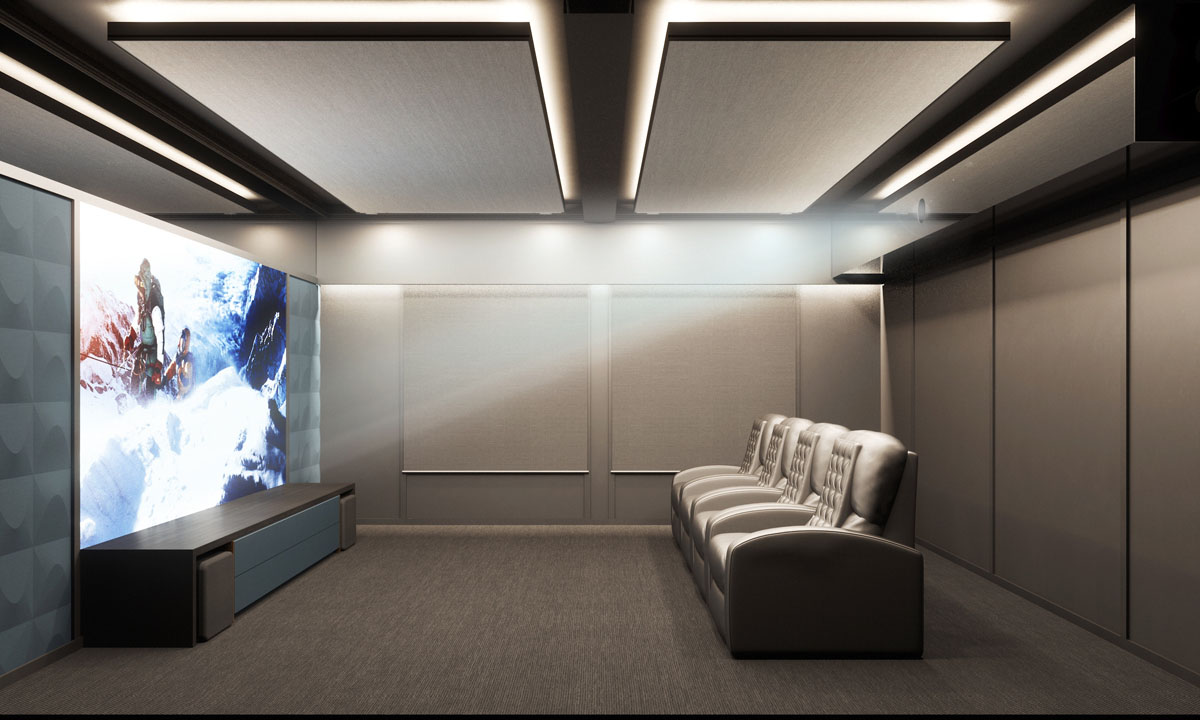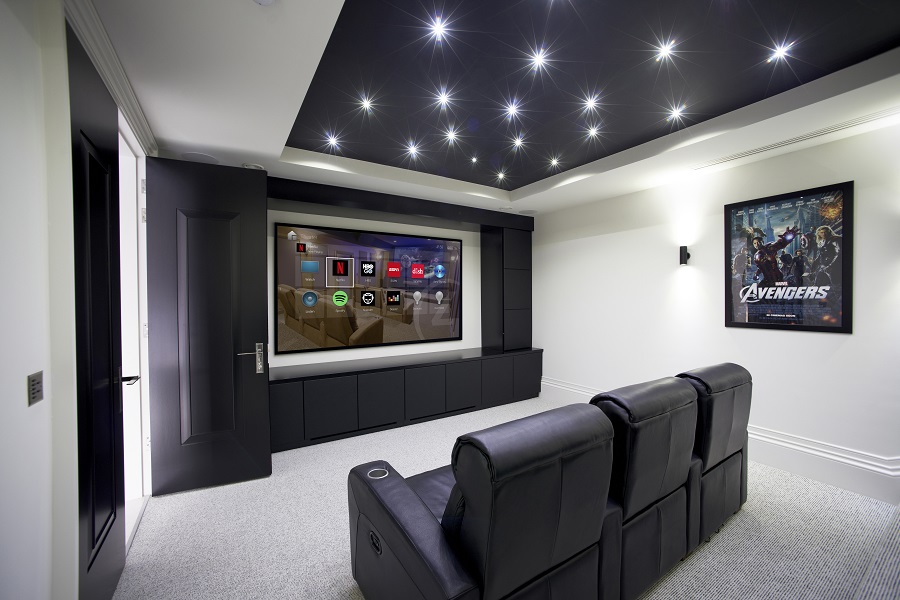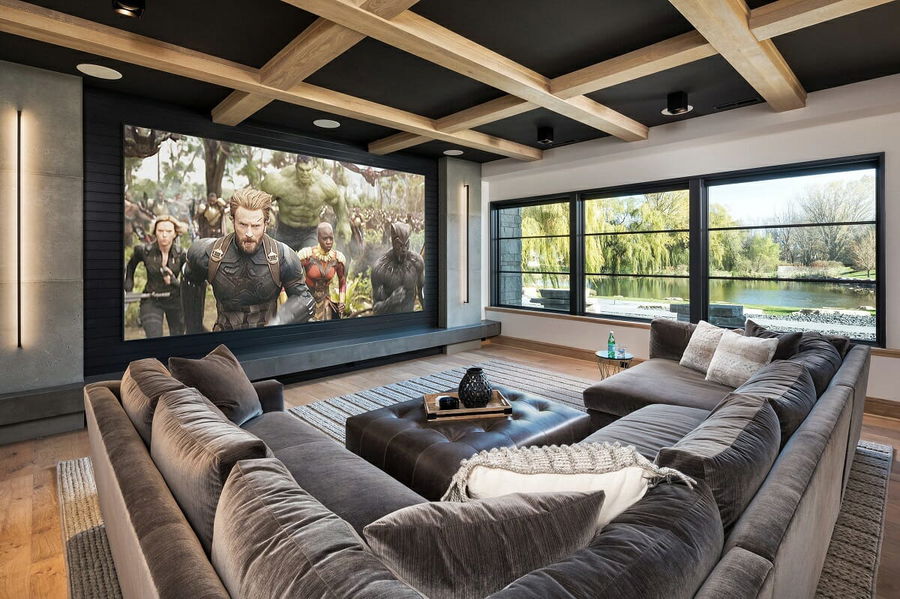Transform Your Living Space with Tampa Home Theater Installation
Home Theater 101: Every Little Thing You Required to Know for a Motion Picture Experience in the house
Developing a home cinema that equals the motion picture experience of a commercial theatre includes mindful consideration of numerous parts, including screen selection, sound systems, and space layout. Each component plays a critical function in attaining the desired ambiance and performance. Whether you are considering the optimal screen dimension or the complexities of surround noise, understanding these principles is vital. As we discover these important components, it becomes apparent that the selections made can significantly affect your total viewing experience, leaving one to contemplate how these choices will form your personal cinema.
Selecting the Right Screen
When establishing a home cinema, selecting the right display can make or damage the seeing experience - tampa home theater. The screen functions as the centerpiece of your setup, affecting picture high quality, viewing angles, and overall visual. Secret variables to consider include screen size, type, and resolution
First, identify the ideal display dimension based on your room dimensions and seating range. Next off, choose between different screen kinds, such as fixed-frame, motorized, or retracting screens, each offering distinctive benefits.
Resolution is an additional vital variable. For a truly immersive experience, think about a display developed for 4K or perhaps 8K web content, making sure sharpness and quality. In addition, think about the display's gain, which impacts brightness and comparison; a greater gain can boost brightness in well-lit spaces, while a reduced gain might be preferable for darker atmospheres.
Choosing Sound Equipment
Audio tools is an important component of any home movie theater system, dramatically boosting the overall viewing experience. The option of audio equipment can determine the deepness, quality, and immersion of sound, crucial for developing a motion picture environment.
When choosing audio devices, take into consideration a surround stereo, which usually includes a receiver, multiple speakers, and a speaker. A 5.1 or 7.1 network system is suggested, where the initial number stands for the speakers and the second the subwoofer, providing an immersive soundscape. The receiver is the heart of the system, managing audio and video clip signals, and need to support contemporary formats like Dolby Atmos for a boosted spatial experience.
Quality audio speakers are important; look for versions that use a well balanced noise account with good bass feedback. Floor-standing audio speakers can produce richer audio, while bookshelf options save space. Furthermore, take into consideration wireless choices for convenience of installation, although wired systems typically provide superior performance.

Ideal Seating Plans
Creating an excellent home theater experience hinges considerably on ideal seating arrangements. The arrangement of seats plays a crucial duty in both convenience and checking out high quality, directly impacting the total motion picture experience.
First, consider the display size and watching range. An usual guideline is to place seats at a distance about 1.5 to 2.5 times the angled size of the screen. This ensures an immersive experience without stressing the eyes.
Next, altitude is my latest blog post crucial. The back rows need to be greater than the front to avoid obstructions if your seats is in a tiered layout. For flat seats, make sure that the front row is not also near to the screen, and that every person has a clear view.
In addition, take into consideration the plan in regards to social characteristics. Team seats can enhance the public experience, while individual seats may be favored for individual viewing.

Finally, focus on convenience with ergonomic seating that sustains prolonged viewing durations. Incorporating recliner chairs or supported seats can substantially enhance the experience, making the home theater a recommended location for both enjoyment and relaxation.
Lighting and Atmosphere
Effective lighting and ambiance are crucial components of a well-designed home theater, as they considerably influence the watching experience. The ideal lights can enhance the motion picture feeling, while bad selections can detract from it. For optimal outcomes, take into consideration a layered lighting method that includes ambient, task, and accent illumination.
Ambient illumination provides general illumination, making sure that the space is not completely dark, which can stress the eyes. Dimmer switches are highly advised, permitting changes based on the material being watched. Task illumination, such as wall sconces or flooring lights, provides useful lighting for activities like analysis or browsing the area without interfering with the total atmosphere.
Accent lighting can be utilized to highlight building features or produce centerpieces, including depth and passion to the room. LED strip lights behind displays or along shelves can offer a refined glow that enhances the aesthetic experience without frustrating the customer.

Wiring and Installation Tips
A tactical circuitry setup is critical for achieving optimum efficiency in your house cinema system. Correct electrical wiring not just ensures premium audio and video signals but also improves the total visual of your area. Begin by mapping out your format, identifying where each part will certainly be placed, including your screen, audio speakers, and receiver.
When choosing cable televisions, prioritize premium, suitably determined circuitry to decrease signal loss. HDMI cables ought to be utilized for video connections, while audio speaker cable should match the requirements of your audio speakers and amplifier. Go with in-wall ranked cables to abide by security standards and preserve a clean look.

Final Thought
In recap, developing an extraordinary home movie theater see here now experience requires careful consideration of different aspects, consisting of display choice, audio equipment, seating arrangements, illumination, and circuitry. Each part plays a critical role in achieving optimal performance and atmosphere, ultimately improving the satisfaction of home amusement. By prioritizing these elements, a motion picture ambience can be effectively duplicated, enabling immersive watching experiences that equal standard cinema setups. Interest to detail in each area is vital for overall complete satisfaction.
Producing a home movie theater that equals the cinematic experience of a commercial theater involves careful factor basics to consider of numerous components, including screen selection, sound systems, and area format.When setting up a home movie theater, picking the appropriate display can make or break the viewing experience. Next, select between numerous screen kinds, such as fixed-frame, mechanized, or retractable displays, each offering unique benefits. For an absolutely immersive experience, take into consideration a screen designed for 4K or also 8K material, ensuring intensity and clearness.In summary, creating a remarkable home cinema experience calls for careful factor to consider of different elements, consisting of screen selection, audio tools, seating plans, lights, and circuitry.